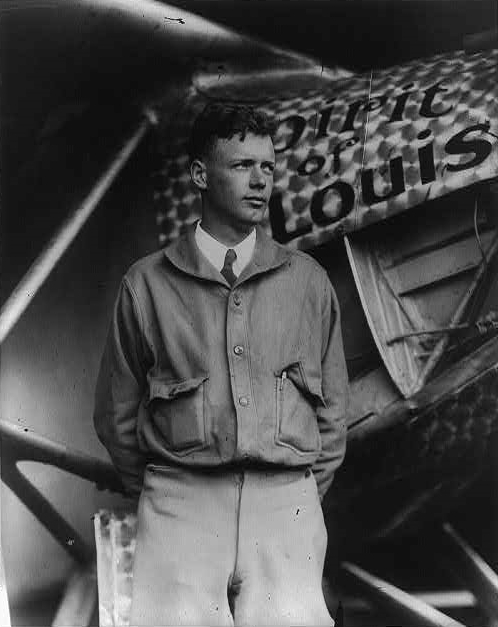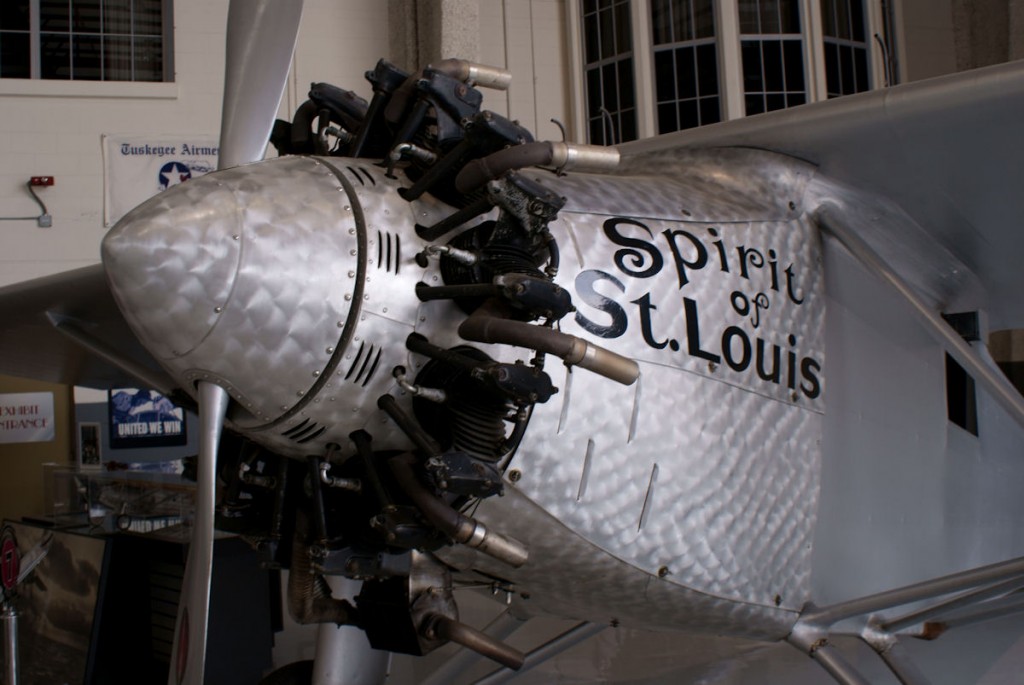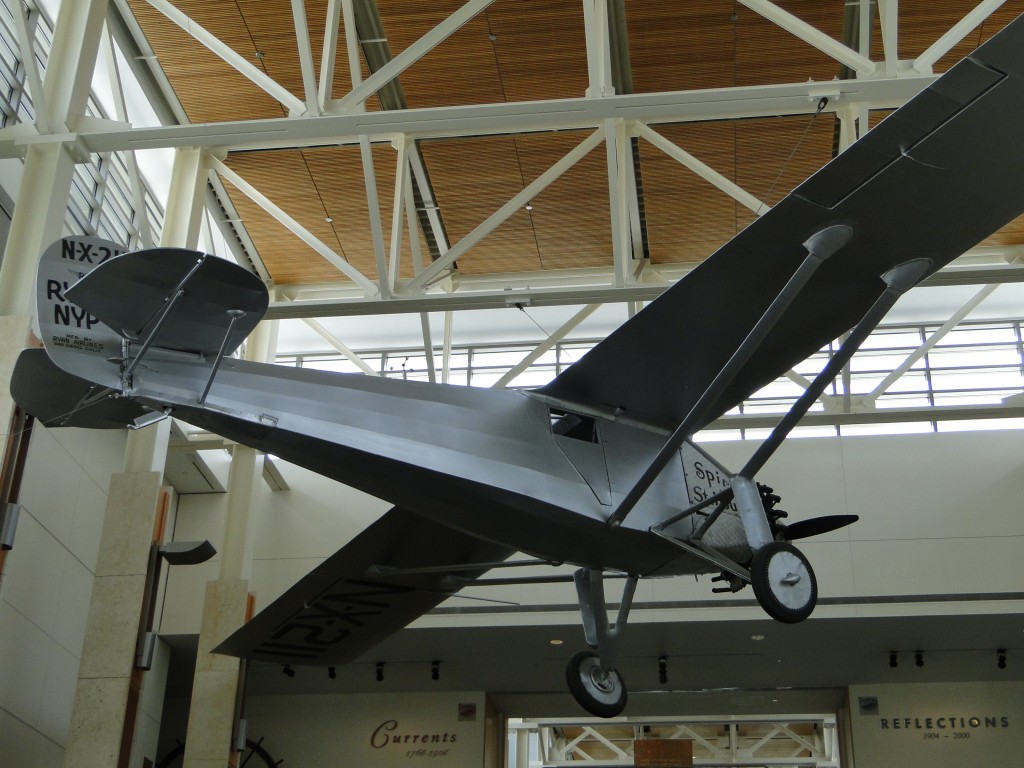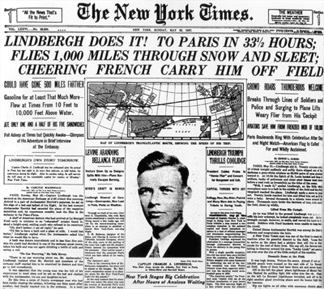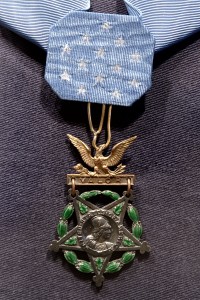 A Flying Affair releases in six days!! I’m giddy with anticipation of letting this one fly into reader’s hands. What a labor of love to spend most of the last two years in the Roaring Twenties, a good bit of that imagining myself soaring through the air in the open cockpit of a Curtiss Jenny. It’s been a wild ride!
A Flying Affair releases in six days!! I’m giddy with anticipation of letting this one fly into reader’s hands. What a labor of love to spend most of the last two years in the Roaring Twenties, a good bit of that imagining myself soaring through the air in the open cockpit of a Curtiss Jenny. It’s been a wild ride!
PRE-ORDER NOW and you can receive the book on release day: June 2. In the meantime, here’s a little history behind the scenes. I wrote this article originally for Heroes, Heroines, and History, a historical blog that I’m part of, and since A Flying Affair takes off just a month after Charles Lindbergh’s legendary flight, I thought you’d enjoy it.
In 1927, two men of humble beginnings rose to fame that surpassed even that of an American President. One was Babe Ruth, New York Yankees slugger, who led his team to seven lifetime American League Championships and four World Series Championships. In 1927, he hit a career-high 60 home runs and is still considered by many as the greatest baseball player in history.
Earlier that year, though, another man rose to the forefront in a different arena – the world of aviation. Charles A. Lindbergh was born in Minnesota, a shy and rather dreamy boy with an uneventful childhood. An only child, he grew up in a comfortable household but one that lacked warmth and affection. In college, he was on the fringe of most everything and classmates were hard-pressed to recall any anecdotes about him when later he became the most talked-about man in America.
America was in a state of flux following the Great War, but aviation was an area that showed great promise on the changing face of society. Formal training was not required to be a pilot and war-surplus planes (Curtiss Jennies in particular) could be purchased for two hundred dollars or less. Barnstorming with aerial stunts such as wing-walking were a great past-time that captured people’s fancy in small towns across the country, and especially in the mid-West. Lindbergh was one of those who was smitten from his first flight in 1922 at a flying school in Lincoln, Nebraska. He obtained a plane and began barnstorming. Two years later he took a job as an airmail pilot flying long hours on the Chicago to St. Louis route. It was then he began to dream of being the first man to fly across the Atlantic. A New York businessman had offered the $25,000 Orteig prize in 1919, and as yet no one had claimed it, but a growing number of contenders were hoping to be the first. Lindbergh knew he had to at least try.
Even so, at age twenty-five, Lindbergh wasn’t considered a front runner for the coveted feat and indeed, several men before him perished while trying to make the dangerous crossing. Lindbergh, though, persuaded a group of businessmen to build him a plane. The Spirit of St. Louis was built to Lindbergh’s specifications but a lot of it was guesswork. The wood and tubular steel frame was covered in pima cotton painted with six coats of aluminum-pigmented dope (a type of varnish that made the cotton shrink to fit tight over the frame). Once completed, it was little more than a flying gas tank.
Storms and flooding across America in the spring of 1927 made people question whether it was a good idea to attempt the flight at all with the unusual weather patterns, but on May 20, a determined Lindbergh took off from Long Island while onlookers held their breaths as the Spirit of St. Louis rose shakily, then came back to earth with a bump. It rose and fell again, and with scarcely five hundred feet left of the runway, the plane still hugged the earth. On the third try, it lifted. Very few spectators that day thought there was a chance that Lindbergh would make it to Paris.
Much has been made of the flight itself, and I’ve always loved the Jimmy Stewart movie The Spirit of St. Louis that shows the agony that Lindbergh went through as he charted his course, alone above a dark and swirling sea, lost much of the time. The thoughts that must have swarmed through his mind boggle mine, but miraculously, thirty three and one-half hours later, the Spirit of St. Louis landed at Le Bourget Field in Paris. Lindbergh’s obscure life would never be the same after this monumental achievement.
Fast facts about the flight:
- The plane was built in a mere two months and tested for less than a month before the triumphal flight.
- A slight drizzle fell from the sky during the night before take-off and the runway was a muddy mess.
- The Spirit of St. Louis was sighted over Nova Scotia a few hours after take-off and not seen again until it arrived in Paris.
- 450 gallons of fuel were burned during the flight.
- The length of the flight was 3,600 miles.
- The only items Lindbergh carried with him were five sandwiches, water, and his charts and maps. He didn’t even have a change of clothes for when he arrived in France.
- A crowd of 150,000 people met him at Le Bourget Field in Paris
Ticker-tape parades and thousands, if not millions of people welcomed him on his return to the States and on his Victory/Goodwill tour to cities across the country. He was the most sought-after man in America, if not the world, Newspapermen dubbed him “Lucky Lindy”, a name he despised. He visited many cities in the following months all the while maintaining a reserve that was like the shy, bashful portrait of his childhood days. When asked why he attempted such a hazardous endeavor, Lindbergh said, “Life without risks is not worth living.”
Much has been written about Lindbergh and his eventful but sometimes tumultuous life after that glorious day in 1927. Two books that I enjoyed while researching were One Summer: America, 1927 by Bill Bryson and The Aviator’s Wife by Melanie Benjamin. They’re both well worth your time.
Stay tuned for more posts about the story behind the story, and next week I’ll be celebrating the release of A Flying Affair with a very cool giveaway that you won’t want to miss.
Til then….

